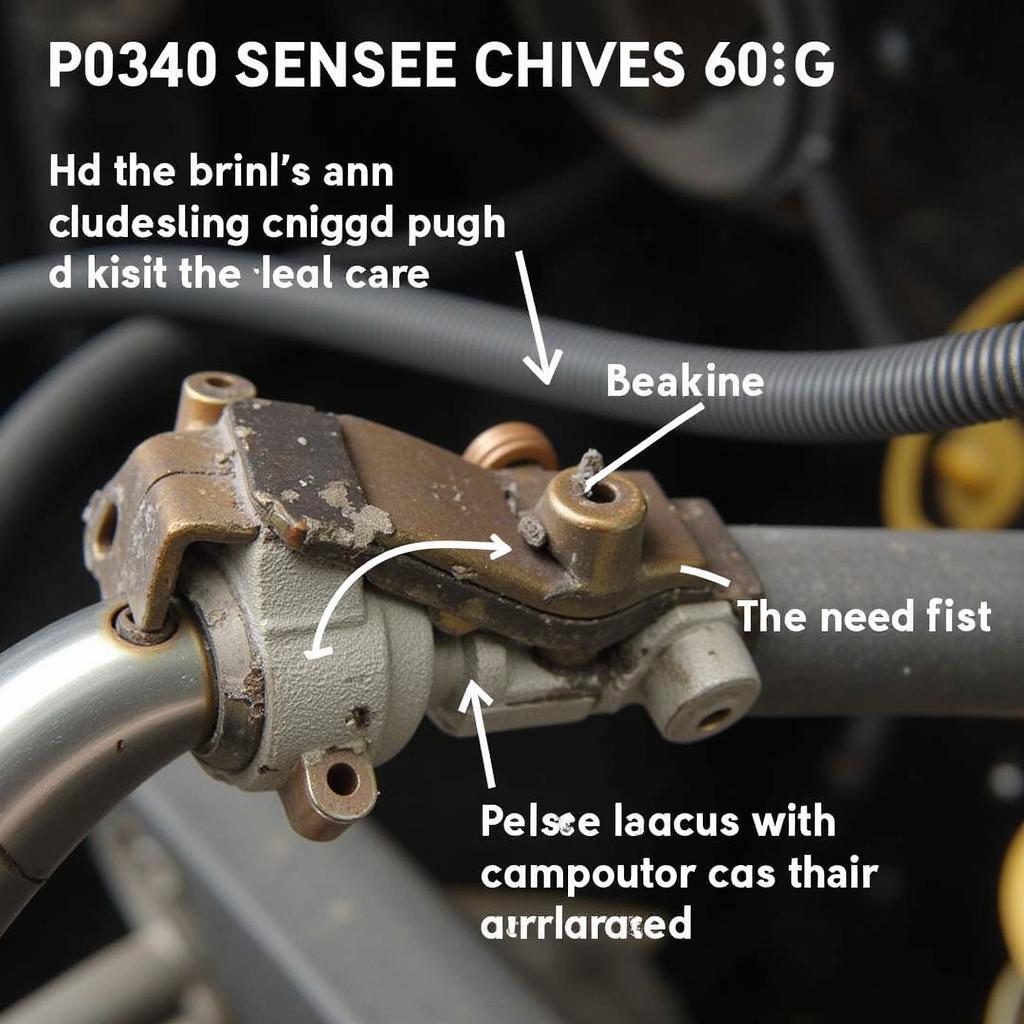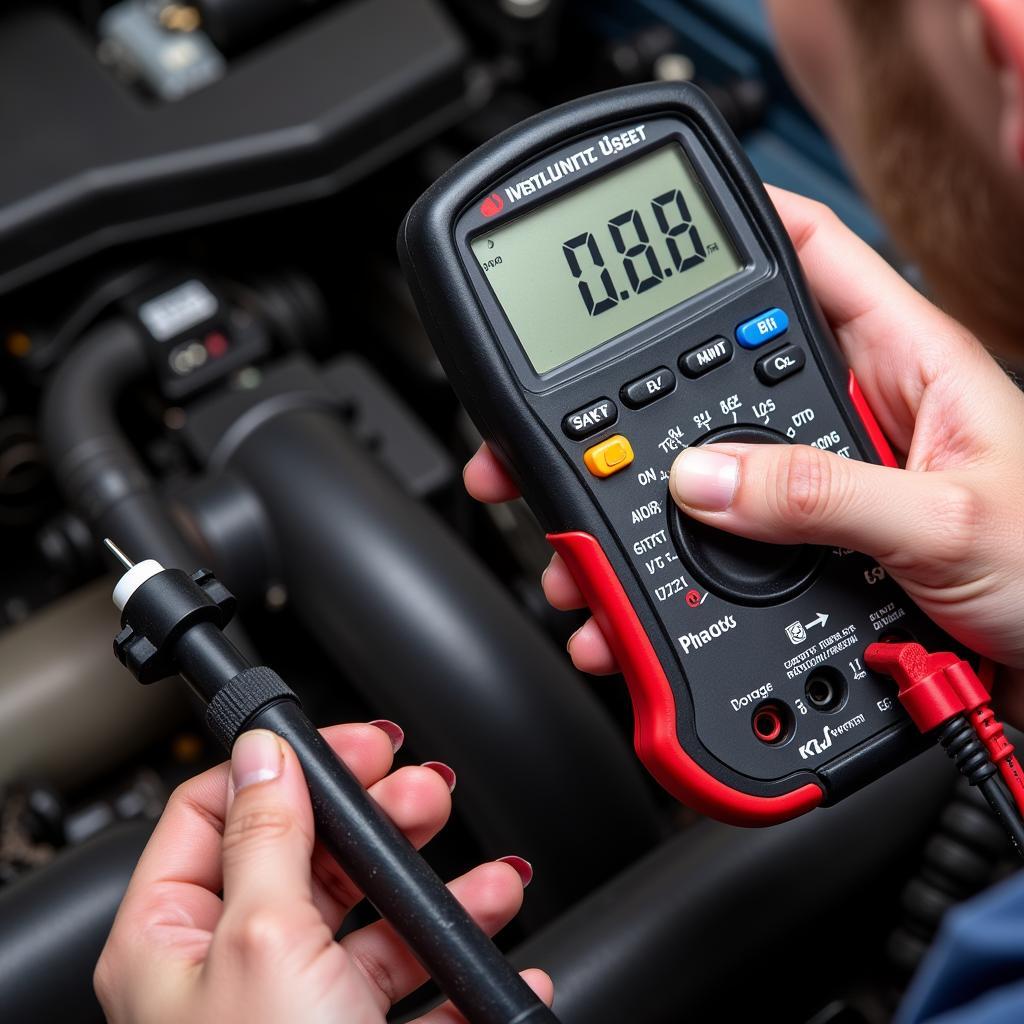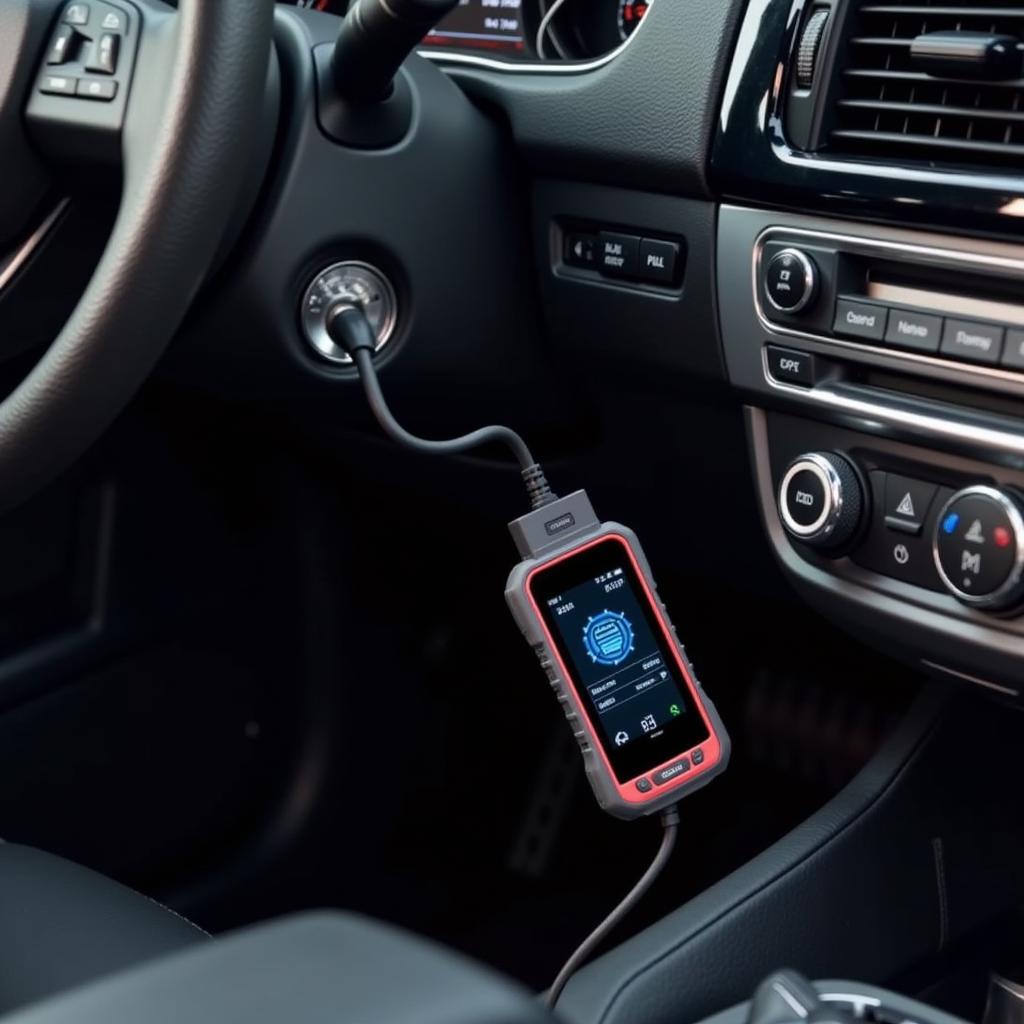A “Check Engine” light glaring from your dashboard is never a welcome sight. When accompanied by the cryptic Car Scanner Code P0340, it can leave even seasoned car owners feeling puzzled. This code signals a problem with your car’s camshaft position sensor (CMP) circuit, a vital component for engine performance. This article will delve into the intricacies of the P0340 code, helping you understand its causes, symptoms, diagnostic procedures, and potential solutions.
Decoding the P0340 Code: What Does It Mean?
The P0340 code specifically indicates that your car’s engine control module (ECM) has detected an issue with the “A” circuit of the camshaft position sensor. This sensor plays a critical role in determining the exact position of the camshaft, which in turn dictates the timing of your engine’s valves. Information from the CMP sensor is crucial for the ECM to optimize fuel injection and ignition timing, ensuring smooth and efficient engine operation.
Causes of the P0340 Code: Unveiling the Culprits
Several factors can contribute to a P0340 code. Here’s a breakdown of the most common culprits:
-
Faulty Camshaft Position Sensor: Like any electrical component, the CMP sensor itself can fail due to wear and tear, exposure to extreme temperatures, or damage to its wiring.
-
Wiring Issues: Damaged, corroded, or loose wiring connecting the CMP sensor to the ECM can disrupt the signal flow, triggering the P0340 code.
-
Crankshaft Position Sensor Malfunction: While not directly implicated, a faulty crankshaft position sensor (CKP) can indirectly impact the CMP sensor’s readings. The ECM relies on data from both sensors to synchronize engine timing accurately.
-
Timing Belt/Chain Problems: A worn, loose, or broken timing belt or chain can disrupt the synchronization between the crankshaft and camshaft, leading to erroneous CMP sensor readings and a P0340 code.
-
Mechanical Engine Problems: In rare cases, underlying mechanical issues within the engine, such as worn-out timing components or valve train problems, can affect camshaft position and trigger the code.
 Faulty Camshaft Sensor
Faulty Camshaft Sensor
Recognizing the Symptoms: How to Tell if Your Car Has a P0340 Issue
Apart from the illuminated “Check Engine” light, a P0340 code often manifests as noticeable performance issues:
-
Engine Stalling: Difficulty starting the engine, especially when warm, is a common symptom.
-
Rough Idling: The engine may idle erratically or vibrate excessively due to improper ignition timing.
-
Reduced Engine Performance: You might experience decreased acceleration, power loss, or sluggish throttle response.
-
Poor Fuel Economy: As the ECM struggles to optimize fuel delivery with inaccurate sensor data, your fuel economy may suffer.
Diagnosing the P0340 Code: Steps to Pinpoint the Problem
Accurately diagnosing the root cause of the P0340 code is essential for effective repair. Here’s a step-by-step approach:
-
Retrieve Diagnostic Trouble Codes: Begin by connecting a reliable car code reader to your vehicle’s OBD-II port to confirm the P0340 code and check for any other accompanying codes.
-
Visually Inspect the CMP Sensor: Locate the camshaft position sensor, typically near the cylinder head or timing cover. Inspect the sensor and its wiring harness for any visible damage, corrosion, or loose connections.
-
Check the Timing Belt/Chain: If visually inspecting the sensor and wiring yields no obvious issues, the next step is to examine the timing belt or chain for wear, looseness, or damage. This usually involves removing the timing cover for a thorough inspection.
-
Test the CMP Sensor Circuit: Use a digital multimeter to test the voltage and resistance of the CMP sensor and its wiring harness. Consult your vehicle’s repair manual for specific test procedures and acceptable values.
 Diagnosing P0340 Code
Diagnosing P0340 Code
- Inspect the Crankshaft Position Sensor: As a faulty CKP sensor can indirectly trigger a P0340 code, inspect it for any signs of damage or malfunction.
Fixing the P0340 Code: Solutions for Common Causes
Once you’ve identified the root cause of the P0340 code, you can proceed with the appropriate repairs:
-
Replace the Camshaft Position Sensor: If the sensor itself is faulty, replacement is the most straightforward solution. Ensure you use a compatible replacement part and follow the proper installation procedures.
-
Repair or Replace Wiring: Damaged or corroded wiring within the CMP sensor circuit necessitates repair or replacement. Use high-quality electrical connectors and ensure secure connections.
-
Replace the Timing Belt/Chain: A worn, loose, or broken timing belt or chain requires immediate replacement. This is a complex procedure best left to a qualified mechanic.
-
Address Underlying Mechanical Issues: If the P0340 code stems from mechanical engine problems, such as worn timing components or valve train issues, consult a qualified mechanic to diagnose and repair the underlying problem.
Conclusion
A car scanner code P0340, signaling a problem with your car’s camshaft position sensor circuit, can be a cause for concern. Understanding the code’s meaning, potential causes, and associated symptoms is the first step toward resolving the issue. By following the diagnostic procedures and repair solutions outlined in this article, you can get to the root of the problem and restore your vehicle’s engine performance. If you’re unsure about any step of the diagnostic or repair process, seeking assistance from a qualified mechanic is always recommended.
For expert guidance and support in diagnosing and resolving car scanner code P0340, don’t hesitate to contact ScanToolUS at +1 (641) 206-8880. Our team of automotive experts is ready to assist you with all your car repair needs. Visit us at our office: 1615 S Laramie Ave, Cicero, IL 60804, USA.
Frequently Asked Questions
1. Can I drive my car with a P0340 code?
It’s not advisable to drive your car for extended periods with a P0340 code. While the car might still run, it could lead to reduced engine performance, poor fuel economy, and potential damage to other engine components.
2. How much does it cost to fix a P0340 code?
The repair cost for a P0340 code can vary significantly depending on the root cause. Replacing a faulty camshaft position sensor is relatively inexpensive, while addressing timing belt/chain issues or mechanical engine problems can be significantly more costly.
3. Can a bad battery cause a P0340 code?
While a weak battery can cause various electrical gremlins in a car, it’s unlikely to directly cause a P0340 code. However, a failing battery can sometimes lead to voltage fluctuations that might temporarily disrupt sensor readings.
4. How often should the camshaft position sensor be replaced?
The camshaft position sensor doesn’t have a specific replacement interval. It’s typically replaced when faulty or showing signs of wear and tear.
5. Can I clear the P0340 code myself?
You can use a code reader to clear the P0340 code. However, if the underlying problem isn’t addressed, the code will likely return. Clearing the code is only a temporary measure and doesn’t fix the root cause.

